“Introduction”
Welcome back to the fourth installment of this article series on European MB Transformers! As we have seen in the previous installments, in 1984 most of continental Europe saw pre-Transformers (toys that would later become Transformers) being sold by a company called Joustra. This toyline was called Diaclone and Joustra released two waves of Diaclone toys. One in 1984, which is the most often found on the collector’s market, and one which was planned for 1985 and was at least partly released (they’re so rare that several of these second wave Joustra Diaclones have yet to surface publicly inside their packaging!!)
Joustra Diaclone pre-TF’s (wave 2) – 1985
So, how come these second wave Joustra Diaclones are so frickin’ hard to find? Well, it seems something happened in 1985. Something which saw Joustra end their production of Diaclones. Something that had a lot to do with the impending arrival of a little toy line called “The Transformers” in Europe. There’s an interesting story there and this 4th installment will be dedicated to telling that story. Strap yourself in, because this is one long and tough ride!
“More than Meets the Eye”
Hasbro had introduced Transformers in 1984 in the US, Canada and the UK. It was a smashing success, so it was no surprise that Hasbro was planning on expanding this toy line into Europe the next year. But here, this company called Ceji Joustra was already selling most of these exact same toys, but under direct license from Japanese toy maker Takara under the name Diaclone. As we have seen in the second installment of this article series, Takara manufactured the toys in Japan and then shipped them to Joustra in France. Joustra packaged them inside their unique and wonderful packaging and distributed them to several European countries. There was no Hasbro involved here, because Joustra had direct dealings with Takara.
In 1983/84 Hasbro became Takara’s biggest and most important client when they rebranded Takara’s Diaclone and MicroChange lines to “The Transformers” in the US. High on the unprecedented success of their new Transformers brand, Hasbro felt the rest of the world should be introduced to the Transformers and they would use their newly acquired MB brand to do just that. But as wel will see, the introduction of the Transformers line in continental Europe was not so easy for MB.
“MB Pulling Out the Big Guns”
MB unleashed a promotional offensive in continental Europe in the fall of 1985 to bring Transformers toys into European toy stores and in the minds of young boys. Commercials were broadcast on European TV channels, comic book deals were struck with local European comic book publishers to publish translated versions of Marvel’s 4-part limited series of Transformer comics. Deals were struck by Sunbow Productions International with European TV channels like Sky Channel, Canal+ (and later, Europa TV) to ensure that the Transformers cartoon would start airing across the European continent in the second half of 1985. In the Netherlands catalogues of the MB Transformers line up were included with popular kids magazines, like the weekly Donald Duck periodical (similiar print promotional activities probably occurred in other European countries). Store catalogs were created and distributed to toy stores. It was clear that the promotional budget for this toy line was unlike anything seen before in most of Europe. The only thing that came close was Mattel’s promotion of their Masters of the Universe toy line. This was something totally new and un-European.
Supporting a toy line with so much promotion costs money. Tons of money. The kind of spending that Ceji Joustra never did, and probably was never able to. Ceji was no small operation by any means, but its financial situation completely pales compared to MB’s. Backed by its new parent Hasbro, MB could tap into the profits that were being generated at that time by record revenues of more than 1 billion dollars per year. For comparison, Ceji’s revenue was “only” 120 million euros (equivalent of the original amount in French francs, because there was no euro in the 1980’s). Contrary to its current value, in the mid 1980’s the US dollar was riding an all time high against most European currencies. Compensating for this historic ratio using a rough estimate we can conclude that Hasbro’s revenue was 20 times bigger than Ceji’s! Hasbro had even surpassed Mattel in 1985 and was now the number 1 toy maker in the world. With so much money being spent, comes much influence. Even if Takara had contracts with Joustra to supply them with Diaclone toys, the kind of money being invested in the Transformers toy line by MB and the prospected earnings were such, that there was bound to be a way around those contracts.
It’s hard to say what exactly happened with the Joustra Diaclone line, because of course we don’t have access to the exact details of what was going on between Joustra, Takara and MB, but by looking at all the information we do have, a pattern emerges which can only lead to one conclusion: MB took over Joustra’s Diaclone stock and reused it for their introduction of the Transformers toy line in Europe.
There. I’ve said it.
Oh, you want more proof than just my word? :-) Well, OK then. That’s more than fair. I believe claims like these should be backed up by evidence or at least an explanation of how I arrived at this conclusion. What follows now is a long list of what I believe to be evidence supporting the conclusion that MB took over Joustra’s Diaclone stock, repackaged it and released it as part of their introductory European Transformers line. I invite you to evaluate these facts for yourself and to try and make up your own mind. There are some very interesting eye-openers here. Ready? Let’s go!
“Exhibit #1: MB Wave 2 = Joustra”
The most striking evidence supporting the idea that MB took over Joustra’s Diaclone stock to reuse it for their Transformers line is observed by looking at MB’s second wave of Transformers. As we’ve seen in the previous chapter of this article series MB released two waves of Transformers in 1985. Here are those two waves again in full:
MB Transformers – waves 1 and 2 (1985)
If we look at MB’s wave 1, we see that most of these toys are actually from the second year of the US Transformers line. There are virtually no first year Transformers there, except for Megatron and Soundwave. Important characters like Optimus Prime, Starscream and all the Autobot cars were absent from the line up. So why is that? Why would MB refrain from including nearly all the popular first year Transformers characters in their line up? Well, an important clue to finding the answer to that question lies in the fact that none of the MB wave 1 Transformers were part of Joustra’s Diaclone line and vice versa….
Although it looks like wave 1 was all that MB originally planned for Europe in 1985, it seems that the snowball named “The Transformers” was getting bigger and bigger and bigger and was turning into a bona fide avalanche. The Transformers cartoon, produced by Sunbow and Marvel Productions, started being broadcast over a large part of Europe through Sky Channel and Canal+ and in several European countries preparations were being made for translations of the the initial 4 issues of Marvel’s Transformers comic book to be released. Suddenly, through the cartoon and the comics, kids in Europe would be introduced to a lot of Transformers characters like Optimus Prime, Prowl, Starscream, Laserbeak, Hound and many others that were not available in the shops, because they were not part of MB’s wave 1 line up!
As fate would have it, Joustra just happened to have already released several Diaclone toys that were predecessors to these very Transformers characters! Let’s look at some of the Diaclone pre-Transformers that Joustra had released or was planning to release in continental Europe.
Joustra Diaclone pre-Transformers waves 1 and 2 (1984-1985)
Most of these pre-Transformers were important characters that were showcased very often in the Transformers cartoon and comics….. and all of them were missing from MB’s wave 1 line up. If we now look at the second wave of Transformers that was released by MB, it’s pretty simple to connect the dots. Except for Sideswipe, all the MB wave 2 Transformers were originally available first as Joustra Diaclones! MB took over Joustra’s Diaclone stock, repackaged the toys and rebranded them as Transformers and added them to their 1985 line up! Now it suddenly makes sense why the MB dealer catalog came in two parts. The original MB catalog only includes the wave 1 Transformers. Later, when MB was able to secure Joustra’s stock, they had a supplement printed which featured all the wave 2 Transformers!
MB Transformers dealer catalog and supplement (1985)
“Connecting the dots: Step 1”
So let’s have a closer look at MB’s wave 2 Transformers and see what we can match up with Joustra’s line up, shall we?
Connections between Joustra’s Diaclone line and MB’s Transformers line (figure 1)
On the upper half of the figure above (fig. 1) you can see some photos of Joustra Diaclone vehicles from the first wave (1984), taken straight from the Joustra Diaclone pack-in catalog. Below that you see photos of Transformers from MB (wave 2) taken straight from the MB dealer catalog supplement. So let’s see… Joustra had the Toyota 4×4 and MB had Trailbreaker. Check! Joustra had the Ambulance and MB had Ratchet. Check! Joustra had Diaclone Truck and MB had Optimus Prime. Check! Joustra had the Ligier, MB had Mirage. Check again! Joustra had the Porsche 935 and MB had Jazz. Check once more! Finally, Joustra had the F15 and MB had Starscream. Check!
“Connecting the dots: Step 2”
How about that for a big piece of the puzzle! Of course, one could still argue that this is just a coincidence. Well, we’re not done yet. Let’s have a look at all the minibots that Joustra had released in 1984 and see if we can match that up with MB’s second wave:
Connections between Joustra’s Diaclone line and MB’s Transformers line (figure 2)
Joustra had Pick Up, MB had Gears. Check! Joustra had Truck and MB had Huffer. Check! Joustra had Trans-Am and MB had Windcharger. Check! Joustra had Cheetah and MB had Brawn. Check! Joustra had Condor and MB had Laserbeak. Check! Joustra had Jaguar and MB had Ravage. Check, check, check! That’s already 12 of the 17 Transformers from MB’s second wave that we have seen first as Joustra Diaclones.
“Connecting the dots: Step 3”
So, only 5 Transformers left from MB’s second wave that we have not traced back to their Joustra Diaclone origins yet. Well, 4 actually. As I shortly highlighted at the beginning of this article Sideswipe is the odd one out, as he was never officially released by Joustra. But let’s see if we can match the remaining four up with Joustra Diaclones!
Connections between Joustra’s Diaclone line and MB’s Transformers line (figure 3)
Again at the top you see catalog photos from Joustra’s Diaclone line. These are all from Joustra’s second wave (1985). No known pack-in catalogs exist of the second wave Joustra’s, therefore these photos are taken from the (equally) incredibly rare Ceji Revell 1985 dealer catalog! Below, again, photos from the MB dealer catalog supplement. Let’s play that game again: Joustra had the Lancia Stratos, MB had Wheeljack. Check! Joustra had Fairlady Police and MB had Prowl. Checker-dee-check! Joustra had Jeep, MB had Hound. Checkeroony! And finally, Joustra had Corvette, MB had Red Tracks! Checkmate….
Isn’t it incredible? Except for Sideswipe, we’ve been able to trace each and every Transformer from MB’s second wave back to a Joustra Diaclone! There is absolutely no doubt in my mind that MB has taken over Joustra’s stock of Diaclones in order to reuse them as Transformers for their much needed second wave of iconic Transformers characters! UPDATE: The mystery of why Sideswipe cannot be traced back to a Joustra Diaclone has been solved!! All will be revealed in the 6th part of this article series! :-)
Now, the idea that there was a connection between the Joustra Diaclone line and the MB Transformers line is not new. Sébastien Carletti, author of the excellent “Nos Jouets 70-80” book has hinted towards the possibility of certain ties between these two lines in a French article that he wrote in 2009 for the second issue of French magazine “Neverland”. What I had not realized before or read about anywhere else was the actual extent to which these two toy lines were connected, because this is not the only thing that ties them together. Further investigation that I did into these two lines resulted in one confirmation after the other of my suspicion that MB took over Joustra’s Diaclone stock in mid-1985. There is much more to this than meets the eye! And here it is….
“Exhibit #2: MB wave 2 printed in France”
Almost all of the early G1 Transformers were made in Japan and had their packaging printed in Japan. This product was then sent off to the US, Canada and Europe to be distributed further by local Hasbro and MB offices. This was the norm. And as far as MB’s wave 1 is concerned, most of the toys released as part of that wave fit that pattern. For example, let’s look at the packaging of some of MB’s wave 1 minibots:
MB Transformers wave 1 – made and printed in Japan
As you can see, they all say “Made and printed in Japan”. Isn’t it reasonable to assume then that MB’s wave 2 Transformers were also manufactured, had their cards printed and were packaged in Japan? The answer is no. Because e.g. if we flip MB Laserbeak’s cards over (an MB wave 2 minibot) and look at the copyright notice on the back, we see this:
MB Laserbeak – made in Japan, but printed in France
That’s right. It says “Printed in France”. Isn’t that kind of strange? Here we have all these Transformers being released all over the western world and most of them are made by Takara in Japan, who also took care of the printing of and the packaging itself. Why then did MB have the packaging for their Laserbeak printed in France? Hmmmm.. Well, just to show that MB Laserbeak is not just an exception, here are the copyright notices of nearly all the Autobot cars that MB released as part of their wave 2:
MB Transformers wave 2 – Autobot cars
Wow! All of these were made in Japan, but had their packaging printed in France! But why? Well, there are two scenarios possible:
- These toys were made by Takara in Japan. MB had the packaging printed in France. MB then sent the packaging to Japan where Takara would package the toys and then send them to MB in France so they could distribute them to European countries.
- The toys were made by Takara in Japan. They were originally sent to France for Joustra to use for their Diaclone line. MB then took over Joustra’s Diaclone stock in mid-1985 and used the exact same printing and packaging facilities in France that Joustra had used to package these toys so they could distribute them to European countries.
From a logistics and economic standpoint it is obvious that the second option is the most logical one. There is no logic in printing packaging in France, sending it off to Japan to have the toys packaged and then have it sent back to France to distribute it to Europe. The more obvious explanation for printing the packaging in France is that the product (the toy) was in France all along! And that fits snugly with our theory that MB took over Joustra’s stock of Diaclone toys that they already had in France and explains why we see this packaging exception in MB’s wave 2.
“Exhibit #3: Packaging variations”
By now we’ve seen that (1) nearly all of MB’s wave 2 was originally available in the form of Joustra Diaclones. We’ve also seen that (2) all of MB’s wave 2 toys had their packaging printed in France. The next thing I would like to bring to your attention is packaging variations! There are five different packaging oddities in the MB line that are related to Joustra’s Diaclone line.
“Variation 1: Funky cardboard supports”
First of all, the most obvious parallel that we can draw between Joustra’s Diaclone line and MB’s second wave Transformers is the fact that MB’s Autobot cars all came inside styro foam inserts. American, Canadian and UK Transformers cars came inside plastic bubble inserts. There is no other version of Transformers Autobot car packaging in the western world that has styro foam inserts. In fact, it doesn’t even make any sense at all to use the styro foam that MB has used, because it doesn’t even fit in the damn Transformers box. It’s too small! MB had to create special cardboard supports that would wrap around the styro foam, so that the Transformer would be positioned accurately behind the plastic window of the Transformers box!
Illustration of why extra cardboard support is needed for MB’s Autobot cars
Clearly, the only logical way to make sense out of this, is to assume that the styro foam inserts were not originally intended to be used with Transformers packaging. And that’s a correct assumption, because they were not. These inserts were designed for Diaclone packaging and not for Transformers packaging. The cardboard support was a necessary addition to make it fit inside the box.
Furthermore, as you may have read in the previous chapter of this article series, Diaclone car robots originally came with little Diaclone driver men. These little Diaclone drivers were omitted from the European release of Diaclone by Joustra, most likely because of European safety regulations. If we look at the styro foam inserts we see that there is an empty space where the little Diaclone drivers would have been placed! Nearly all of MB’s Autobot cars have styro foam inserts with the exact same empty space where the Diaclone drivers would’ve been placed, just like the Joustra Diaclone releases. If we assume for a moment that MB did specifically decide to make these styro foam inserts that do not fit inside their Transformers packaging without the addition of some funky cardboard support, why on earth would they have created a special cut out section that coincidentally would be an exact fit for a Diaclone driver? It doesn’t make sense at all. The only way this does make sense is to assume that MB got these Autobot cars already inside their styro foam, that these were originally Diaclones…..
“Variation 2: MB’s red Tracks variant”
Remember the wonderful Red Tracks that is arguably the most popular collector’s item of the MB line? Well, although Tracks is normally blue in the Transformers universe and the box art and stock photography on MB’s Red Tracks packaging also feature a blue Tracks, the item inside the box is nice and shiny, bright red. The MB dealer catalog also shows a blue Tracks, but the truth is there never was a blue MB Tracks.
Joustra had released the red Diaclone Corvette as part of their second wave (1985) Diaclones. As we’ve seen so far, everything points towards the likelihood of MB having taken over Joustra’s Diaclone stock. So of course they have also taken over Joustra’s remaining stock of red Corvettes. They simply added a rub sign on the roof of the toy, a Transformers Tracks sticker sheet and instruction booklet and put everything inside a Tracks Transformers box, and presto! A Red Tracks variant has been created. Ladies and gentlemen, we’ve just solved the mystery of why Milton Bradley’s Tracks is red!
How MB created the red Tracks variant
“Variation 3: Halfway Huffer”
And there is no let up in the packaging oddities that are shared between MB and Joustra. The next item I would like to present to you is Huffer. MB released minibot Huffer as part of their second wave. Joustra released the same bot in 1984 under the name Truck. Well, by now we can probably guess where Huffer’s packaging was printed. If we flip over to the back of the card we can see this as part of the copyright notice:
MB Huffer – made in Japan, but printed in France
Yep, you guessed it. “Printed in France”. But we knew that already and that’s not the distinctive feature I was getting at. The packaging variation we have here is that Huffer is packaged in some sort of halfway transformed mode. The normal way you would find Huffer on his blister card is either in robot mode or in truck mode. Here is how MB’s Huffer was available. As you can see, his face is being obscured by the cab portion that hasn’t been flipped back:
MB Huffer mistransformed in packaging
I don’t know of any other version of Huffer being packaged like that. Except, that is, until I found what Joustra’s Diaclone equivalent of Huffer called “Truck” looked like inside his packaging! Now look at the MB Huffer and Joustra Truck together:
MB Huffer (left) and Joustra Truck (right)
Isn’t it, again, a coincidence that the only two toy lines that have this packaging variation in common are Joustra’s Diaclone line and MB ‘s Transformers line? Possible, but the number of coincidences between the two lines is starting to pile up and it’s getting increasingly harder to ignore the similarities between them. The identically odd way of packaging Huffer, the fact that the cardback was printed in France seem to support our theory that this is old Joustra stock taken over my MB and that the same French printing and packaging facilities were used.
“Variation 4: Decepticon Cassettes”
There’s another packaging variation in MB’s second wave of Transformers that only exists in MB’s line. In all other western markets the mini cassettes were released in dual packs, i.e. you would buy two cassettes on one blister pack. E.g. this is how Frenzy and Laserbeak were released together in the US:
US version of Frenzy and Laserbeak packaging
Contrary to the US, Canadian and UK releases, the MB cassettes came packed on solo blister packs. Here’s how Laserbeak was released by MB:
MB version of Laserbeak packaging
Absolutely beautiful packaging variation if you ask me. But how does that support the idea that MB took over Joustra’s stock of Laserbeaks and Ravages? Well, it supports the idea that MB used the exact same production facilities in France to package their Laserbeaks and Ravages as Joustra did. Joustra also released both these toys solo on blister cards. The backer cards of the Joustra cassettes and the MB cassettes have nearly the same dimensions and they have almost identical plastic bubbles to hold the cassette and the accessories. Have a look:
MB Laserbeak (left) and Joustra Condor (right)
Is it just a coincidence that both the Joustra cassettes and the MB cassettes have such similiar packaging? I think not. I think MB simply used the same production facility in France that Joustra did to package their Decepticon cassettes, which explains why these came solo in the MB line, contrary to how they appeared in the US. They just changed the artwork on the backer card and moved the bubble from the left to the right.
“Variation 5: Prowl’s styro insert”
Of all the cars that Joustra released under their Diaclone line, it seems that most of them had a piece carved out of their styro foam insert where the little Diaclone driver would fit inside. Joustra Diaclone Fairlady Police did not have this space for a little Diaclone driver. The same toy was rereleased by MB as Prowl. Of all the Autobot cars that MB released, this is probably the only one that also does not have this space carved out for the Diaclone driver (I am not sure about MB Sideswipe yet). Again, support for the theory that MB actually reused Joustra’s Diaclone stock.
Joustra Fairlady Police (above) and MB Prowl (below)
“Helicopter View”
Phew! Let’s just take a step back for a moment and get that helicopter view again. By now we’ve seen that (1) nearly all of MB’s wave 2 was originally available in the form of Joustra Diaclones. We’ve seen that (2) all of MB’s wave 2 toys had their packaging printed in France. We’ve also seen that (3) there are many packaging variations in MB’s wave 2 that can be explained if we assume that this was all originally Joustra Diaclone stock. The Autobot cars came with special cardboard supports, MB’s Tracks just happens to be red instead of blue, Halfway Huffer is packaged the same in both MB’s and Joustra’s packaging, MB’s Decepticon cassettes came on solo cards instead of the regular dual packs and MB’s Prowl doesn’t have a space inside his styro for a Diaclone driver, which also happens to be the case with Joustra’s Diaclone Prowl (Fairlady Police). Crazy, isn’t it?
“Exhibit #4: Fegersheim”
It gets even crazier. We already know that MB had the packaging for their wave 2 Transformers printed in France. It seems that this packaging was printed by a company called Cajofe. How do we know that? Well, it says so on the packaging! Cajofe printed their logo on the inside flap of the Transformers packaging that they printed for MB:
Cajofe logo on inside flap of MB Prowl box
The company Cajofe does not exist anymore under that same name, but if we dig into the history of the company, we find that Cajofe was located in a small town called Fegersheim in France. This town is situated just 17 kilometers south of Strasbourg…… Waiddaminute, Strasbourg sounds familiar! The name “JouStra” is actually short for “Jouets de Strasbourg”, which is French for “Toys from Strasbourg”. Strasbourg is of course the home base of Joustra! Isn’t it rather coincidental that MB had all the packaging for their second wave Transformers printed just 17 kilometers away from Joustra’s warehouse? Of course not! What could be more convenient or cost effective than to print the packaging so close to where the toys were actually located? Much more cost effective than to have them printed in Fegersheim, have them sent to Japan, have Takara package them there and send them back to MB in France, I’m sure you will agree! So again, support for the theory that MB took over Joustra’s stock in France!
Approximate distance between Strasbourg and Fegersheim, France
“Exhibit #5: MB’s 1985 Grand Prize Contest”
So is that all? Well, no. There is one more very interesting piece of evidence that I would like to present that I consider to be the slam dunk. In the fall of 1985, right around the time that the second wave of MB Transformers was introduced an exciting prize contest was held in France. A shitload of Megatrons, Sludges and Seasprays were given away, but the most interesting part was the grand prize, which would win you the complete Transformers line up!! The competition was run as an ad in a French magazine and this what it looked like:
MB France prize contest (late 1985)
Great, but what is so interesting about it? Well for one, that this ad claims that the complete line consisted of 70 Transformers. That’s kind of odd, since there were only 53 officially released Transformers in the MB line. But what is most interesting is the little photo we see at the bottom of the ad. It shows a photo of an MB Shockwave inside his packaging, surrounded by what appear to be several loose Transformers. Let’s have a closer look:
Wow! Quite some eye openers there. Ignoring for a moment the awful states of mistransformation that some of these toys are in, what we see here are mostly some Autobot cars and mini-vehicles. Going from the left to the right we can clearly see a part of Trailbreaker in car mode on the far left of the photo. Next to him there’s good old Red Tracks, with Mirage in front of him and next to them are Wheeljack and Sunstreaker. Wait, what? Sunstreaker? Sunstreaker never saw an official European release in the 1980’s (not until 1990 as part of the European G1 Classics line), so quite the oddity that he’s shown here.
What we can further observe is the four minibots from MB’s second wave; Huffer, Brawn, Windcharger and Gears. The last two look like they are in a world of hurt. I’ve seen many mistransformations in catalogs and such, but these really take the cake. The people who made this photograph really had absolutely no clue what they were doing, but I guess it adds to the charm of this unique piece of European Transformers history.
So we’re still left with three more robots, which I have highlighted in the photograph above, that we haven’t identified yet as Transformers. Well, that’s because they are technically not Transformers. They’re Diaclones! I’m having trouble identifying the litte rascal on the left (UPDATE: I now have it confirmed it’s “Cromar”. Thanks, Christophe!), but the two on the right are cassette robots from Joustra Diaclone wave 2! They’re the very rare Joustra Diaclone “Cassette Hélicoptère” and the “Cassette Moto”, in vehicle mode and cassette mode respectively. Here’s what they look like in their Diaclone packaging:
Joustra Cassette Hélicoptère and Cassette Moto (1985)
In fact, when you look at all the other Transformers in the photo (except for Shockwave), these have all been originally released as Joustra Diaclones! And that explains why we see Sunstreaker here. Sunstreaker can be found advertised in the Ceji Revell 1985 catalog as being part of Joustra’s wave 2 Diaclones!
Joustra Countach (stock photo from 1985 catalog)
Granted, Sunstreaker was red in the catalog and is yellow in the prize contest photo, but Joustra depended on whatever stock they got from Takara and it’s not a total surprise that he may have turned out to be the yellow Sunstreaker instead of the red one. UPDATE: I have received confirmation that the Joustra Diaclone Countach was actually the yellow one!
Sooooooo, if those cassettes are actually Joustra Diaclones, if Sunstreaker’s presence in this photo can be explained as being a Joustra Diaclone and if all the other robots are confirmed as having been released by Joustra as Diaclones, isn’t it perhaps reasonable to assume that all these loose robots pictured here actually all are Joustra Diaclones? My opinion is that it is more than reasonable to assume so. And if we accept that these are Joustra Diaclones, then we certainly have a very unique photo here, because it shows an MB Transformer inside production packaging, together with Joustra Diaclones in the very same photo! This proves that MB, somewhere in the second half of 1985 when this photo was taken, was in possession of Diaclones that were originally meant for Joustra! Other than getting direct confirmation from an ex-Joustra or ex-MB/Hasbro employee at that time, this is probably as good as the evidence can get. Actual verifiable, photographic confirmation of MB’s and Joustra’s product together in one photo that has been used in a print campaign, run by MB.
“Exhibit #6: L’Optimus Prime”
Now that I have outlined most of the information that has convinced me that MB’s wave 2 Transformers were actually originally Joustra Diaclone stock, there is still something I need to clear up and that is MB’s release of Optimus Prime. Now that we have seen that almost all the second wave MB Transformers were released earlier as Joustra Diaclones and that there is very strong evidence suggesting that MB took over Joustra’s Diaclone stock in order to re-release it as Transformers, you would be forgiven for thinking that MB’s Optimus Prime also originally only belonged to Joustra’s stock of Diaclones. He did not, because there were 2 Primes released by MB (well, I suspect 3 really, but that’s for a future update). One is the blue foot Prime, which was originally Joustra stock and the other is a red foot variant! No known red foot Primes were ever released by Joustra (or any other Diaclone line as far as I know of).
MB red foot Optimus Prime (above), Joustra Diaclone Truck (below)
So if MB’s red foot Optimus Prime was not old Joustra Diaclone stock, what is it? Well, the answer lies in the copyright notice on MB’s red foot Optimus Prime packaging. If we flip his packaging over to look at the copyright notice, we see something quite unexpected:
MB Optimus Prime (red foot variant) copyright notice
Wait, what? “Made in Strasbourg, France“? By “Ceji Revel” (sic)? What’s going on here? So far we’ve seen that everything was made by Takara in Japan, regardless of where the packaging was printed. But here we have MB’s red foot Optimus Prime, that was actually manufactured in France by Ceji. Well, to me it’s pretty clear that the ties between MB and Joustra are much, much deeper than just MB having taken over Joustra’s old Diaclone stock. Here we have evidence that MB and Takara have actually outsourced the production of Optimus Prime to a toy company in Strasbourg!!! Although Ceji Revell is the company being credited in this copyright notice, it’s not hard to guess which toy manufacturer, belonging to the Ceji group, having had decades of experience manufacturing die cast metal toys was located in Strasbourg. Of course that’s Joustra!!! The maker of toys from Strasbourg!
So even though MB’s red foot Optimus Prime is not old Diaclone stock from Joustra, MB still got these from Joustra. The difference being that Joustra actually made these red foot Optimus Primes themselves!! If we look at the inside flap of MB’s red foot Optimus Prime packaging we see that the packaging was again printed by Cajofe in Fegersheim, just 17 kilometers away from where Joustra manufactured these Primes for MB. This is the same for both the blue foot (ex-Joustra) and red-foot variant Optimus Prime packaging.
MB Optimus Prime packaging – inside flap
So why did Optimus Prime get special treatment? It’s quite possible that the amount of stock of Primes that Joustra had was simply not enough to satisfy the expected demand in Europe. Optimus Prime after all was one of the most popular characters of the toy line. Takara’s production capacity was probably completely tied up with creating product for the enormous US market, so a logical decision would have been to set up an additional production line for Optimus Prime in France, that could cater to the European market. This was not a novel idea, because Mattel had done the same for their Masters of the Universe line in the mid 1980’s.
Given that MB and Joustra already had a business relationship (because MB took over their Diaclone stock to use it for their second wave of Transformers) and given the fact that Joustra was known to have had the capacity and expertise to produce toys on a large scale for many decades in Europe, it was quite natural that MB turned to Joustra to create enough Optimus Primes for the European market.
But hold on! If Optimus Prime got this special treatment, how about Megatron? Well, let’s just look at MB Megatron’s packaging……
MB Megatron copyright notice
Well, fair is fair and it looks like Megatron got the same treatment as Optimus Prime. Our famed maker of toys from Strasbourg, France was also responsible for the manufacturing of Megatron for the MB line! Is your head spinning by now? Mine is. If you’re still reading this article I have to commend your stamina and eagerness to absorb all this geeky, trivial information. But let’s get back on track! Just to confirm that these two toys were actually made in France, here’s a photo of their copyright stamps:
MB Optimus Prime and Megatron – made by Ceji Joustra
As we will see in a future installment of this article series, Optimus Prime and Megatron were not the only two Transformers produced by Ceji’s facilities for the European market! In 1986, MB started releasing Hasbro branded Transformer in continental Europe and there were at least 9 other Transformers that were made in France by Ceji for this 1986 line up!!
Quid pro quo
But why did MB go through Ceji Joustra to obtain their wave 2 Transformers? Why not simply have Takara churn out more Optimus Primes, Autobot cars etc? Well, at the beginning of this article I already hinted at a legal problem regarding MB’s wave 2 Transformers. MB desperately wanted to release popular Transformers from the first year like Optimus Prime, the Autobot cars, Starscream and others, but by the time MB wanted to introduce Transformers in Europe Takara had already given away an exclusive sales license to Ceji Joustra for these toys for much of continental Europe! This means that no one else but Ceji Joustra was allowed to sell these toys in these countries. This also means that the only way that MB could release these toys in continental Europe was to do so by negotiating a deal with Ceji. Takara was not allowed to supply MB with these toys, because that would mean breaking the terms of their contract with Ceji, which would have put Takara in a position where they could be sued by Ceji. Obviously, some sort of deal was struck between Ceji and MB, which cleared the way for the release of these toys as part of MB’s wave 2.
But why would Joustra willingly give up their stock of Diaclones to a competitor? Well, we know for a fact that Joustra’s parent company Ceji was in dire financial straits in 1985. Selling off their complete Diaclone stock would have generated much needed cash flow. It would’ve been less than what they would’ve gotten by selling the product to retailers, but it would’ve been immediate cash.
What probably will have sealed the deal though, is MB’s promise to outsource the production of a significant amount of Transformers to Ceji’s daughter Joustra. Optimus Prime, Megatron and lots of other Transformers were made by Ceji Joustra for MB. Both the sale of their remaining Diaclone stock and the money that Ceji would get from MB to have Joustra manufacture Transformers for Europe would have generated highly needed cash flow for Ceji. Alas, in the end it was obviously not enough, because Ceji ceased trading somewhere in 1986 and filed for bankruptcy.
Armed with this information, suddenly it becomes clear why the second wave of Joustra Diaclones is so incredibly hard to find in today’s collectors market. Somewhere in 1985 Ceji either gave away or subcontracted their exclusive rights to their Diaclone line out to MB. This would have made MB the new exclusive license holder for these toys and would have meant an immediate end of the Joustra Diaclone line right then and there. The time span during which Joustra’s wave 2 Diaclone toys were available will have been a very short one!
When you think about it, it’s almost poetic. Here we have MB in need of popular Transformers, but is not allowed to sell them, because Ceji already has the exclusive rights to these. On the other hand we have Ceji daughter Joustra with Diaclone stock, which contains much of the toys that MB wants and their parent company, Ceji, that is in poor financial shape. MB and Ceji strike a deal that transfers the exclusive sales license for these toys to MB and gives them control of Joustra’s Diaclone stock and in return Ceji is awarded contracts for the manufacturing of shitloads of Transformers by their daughter Joustra.
Speculating even further, it is very likely that this deal between MB and Ceji meant that Ceji would take care of everything, i.e. Ceji’s daughter Joustra took care of the repackaging of the Diaclone toys into Transformers packaging and delivered a complete product to MB, which was ready to go. As we have seen there is much evidence that the same packaging facilities in France were used to create and package this Joustra stock into MB Transformers packaging. The cardboard support inserts for the Autobot cars were most likely thought up by Joustra as well.
(Note: There is much more to explore about this subject of Ceji’s sales exclusivity and we’ll be digging into that in the next installment!)
“In Summary”
Let’s just recap the vast amounts of info we’ve just looked at, that seems to indicate that MB took over Joustra’s Diaclone stock in order to reuse it for their wave 2 Transformers:
- All the MB wave 2 Transformers were available earlier as Joustra Diaclones (except for Sideswipe).
- The packaging for all the MB wave 2 Transformers was printed in France, whereas normally it would’ve been printed in Japan.
- It was printed by a company situated very close to Joustra.
- MB’s Autobot cars came in styro foam inserts instead of the normal plastic bubble inserts, just like the Joustra Diaclone cars.
- MB’s Tracks happens to be red instead of blue. Joustra had released the same toy in red earlier, with the same mould.
- MB’s Huffer is packaged in the same weird half-transformed way as his Joustra Diaclone counterpart, Truck.
- MB’s Decepticon cassettes Laserbeak and Ravage came packaged solo, just like their Joustra Diaclone counterparts, Condor and Jaguar.
- MB’s Prowl has no Diaclone driver space on his styro insert, neither did his Joustra Diaclone counterpart, Fairlady Police.
- MB’s 1985 grand prize contest shows a photo of an MB Shockwave together with Joustra Diaclone stock.
- Joustra has manufactured Optimus Prime, Megatron and several other Transformers for MB, meaning there was definitely a business relationship between MB and Joustra.
And there you have it. If you add up all these facts, it seems fairly impossible to ignore that this is what actually happened somewhere in 1985 on the European continent. It unravels a lot of the enigmas surrounding MB’s line, like why MB Tracks is red, why the Autobot cars came with styro foam packaging and why the packaging was printed in France. Quite fascinating if you ask me.
Things were very much in flux in the early Transformers years in Europe, with obvious shortages of popular Transformers due to worldwide demand, Diaclone product that was already available in Europe through players like Joustra and GiG and a freshly taken over Milton Bradley company that would suddenly be responsible for the European introduction of Hasbro’s most important new brand, “the Transformers” and quite brilliantly managed to allocate much needed extra Transformers stock for Europe by taking over existing stock from a competitor and having that same competitor manufacture extra Transformers under license from Takara. Dynamic circumstances like these make for interesting stories around digital campfires, more than a quarter century later (if you’re a nerd, like me). ;-)
“We Are Family!”
When I started collecting MB Transformers originally in 2009 I had no friggin’ clue as to their real origins. I just loved them, because they reminded me of my childhood and I vividly remember looking at MB Transformers in my local toy store when I was 10 years old. Coincidentally around that same time in 2009 I completely fell in love with Joustra Diaclones when I first saw them in the collection of a guy that I bought my initial batch of MB Transformers from! I can’t remember ever having seen Joustra Diaclones in toy stores in my youth, but I just loved the beautiful artwork that graced their packaging and was compelled to collect this toy line.
As time went by I started to discover more and more similarities between these two toy lines and ultimately ended up with the information that you have just read in this chapter. The realisation that the two toy lines that I love collecting the most have a history that is so closely intertwined, really just made my day. In fact, if you were to express the relationship that exists between these two toylines in human terms, the best way to do that would be to say that they were family.
“Up Next: Jetfire vs Optimus Prime”
In the next installment we’ll be having a look at the first of an exciting series of articles on what I have dubbed “MB Mysteries & Variants”. In the MB line Jetfire was initially positioned as the leader of the Autobots. Theories abound on the internet as to why this happened. I’ll be debunking and disassembling this subject matter in the next article!
Credits:
- Photos of Joustra Diaclone Ligier, Lancia Stratos, Jeep, Fairlady Police from the collection of Maz at TF-1.com
- Photos of MB Jetfire and MB Sludge from the collection of Ferdy La Bree (bobafer73)
- Photo of MB Starscream and Joustra Diaclone Corvette from the collection of JB Martin
- Photo of MB Thundercacker in Starscream packaging courtesy of Chuck Liu
- Photos of Joustra Diaclone Cassette Moto, Cassette Hélicoptère and Truck from the collection of Sébastien Carletti
- Photo of US Frenzy and Laserbeak from the collection of patobot. Used under Creative Commons BY-NC-SA 2.0 license.
My personal gratitude to all the persons listed above, without whom this article would not have half the appeal it has. Thank you.


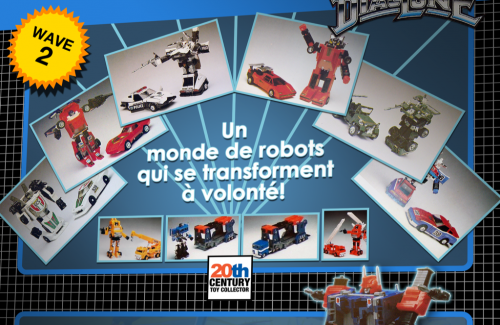
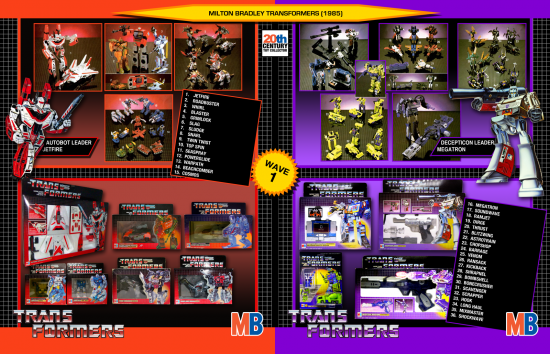
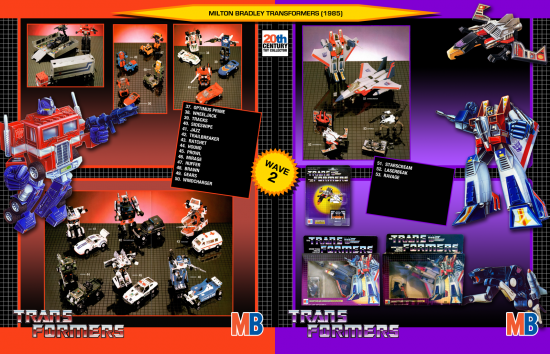
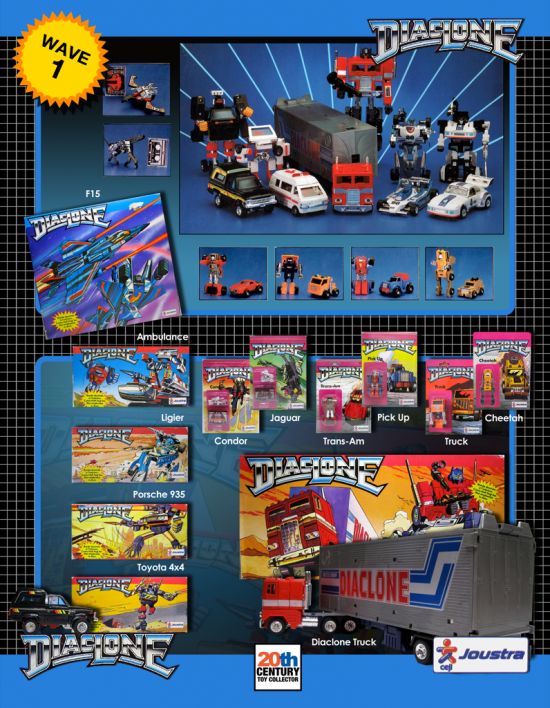
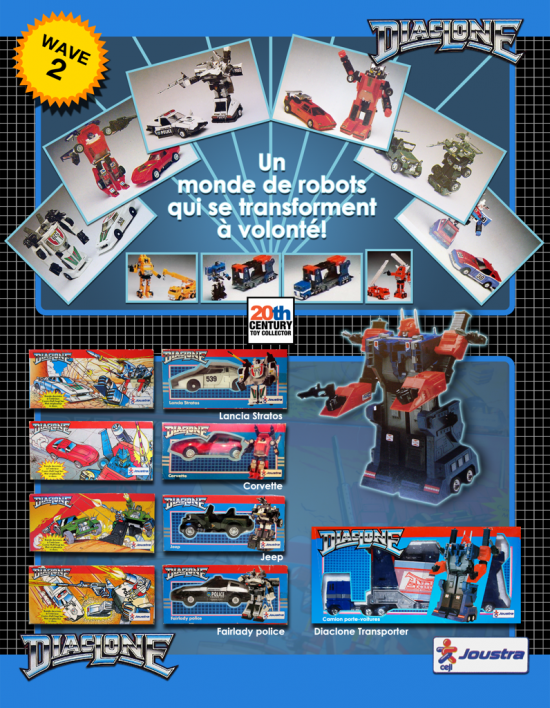
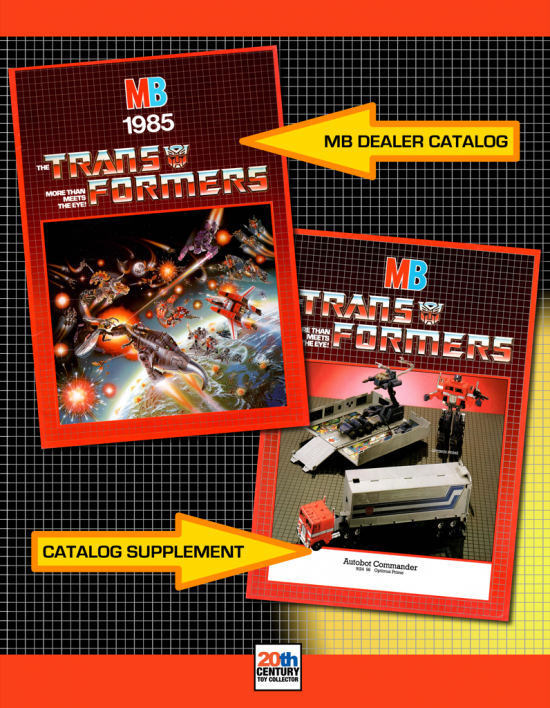
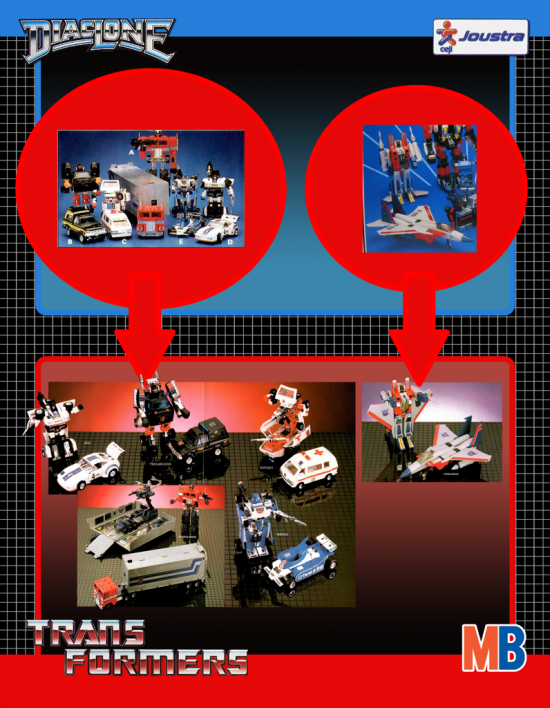
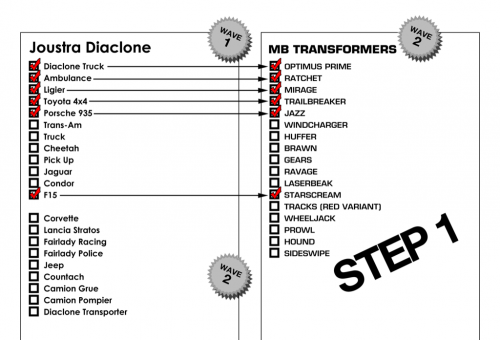
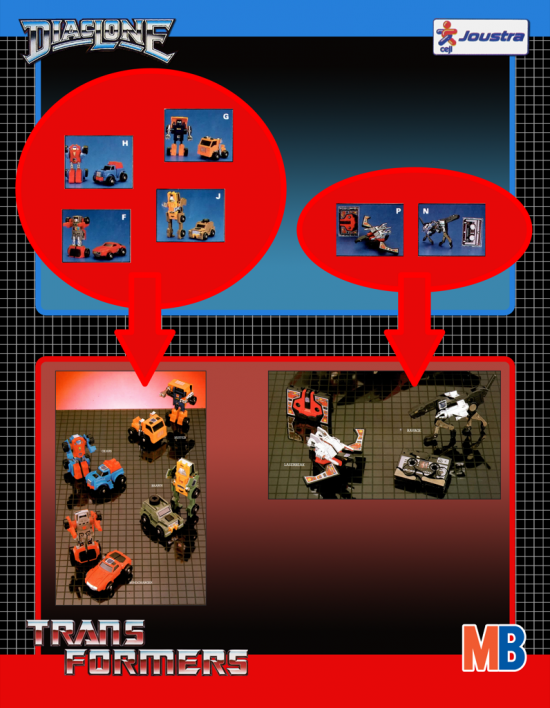
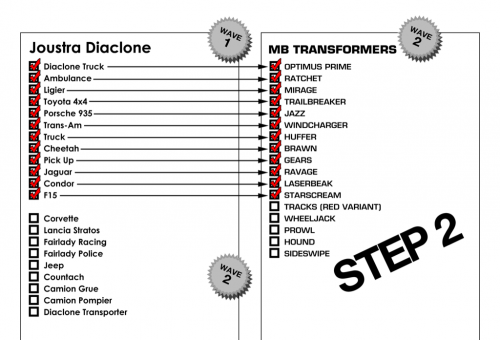
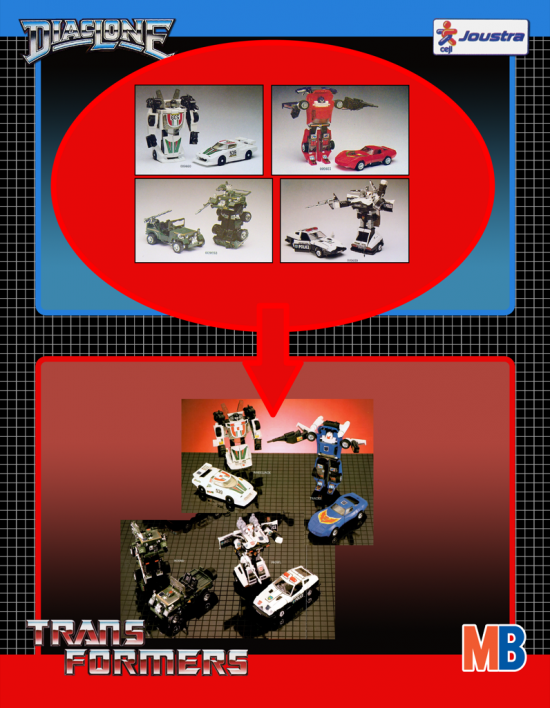
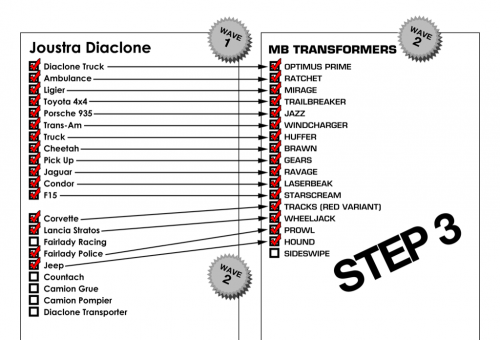
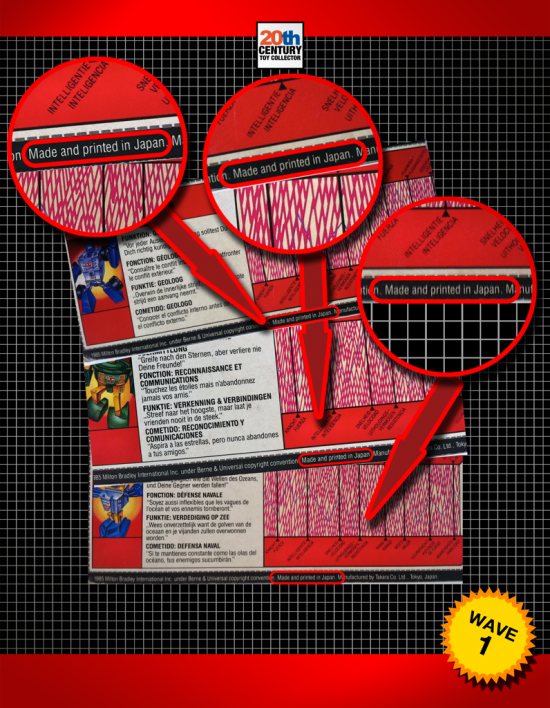
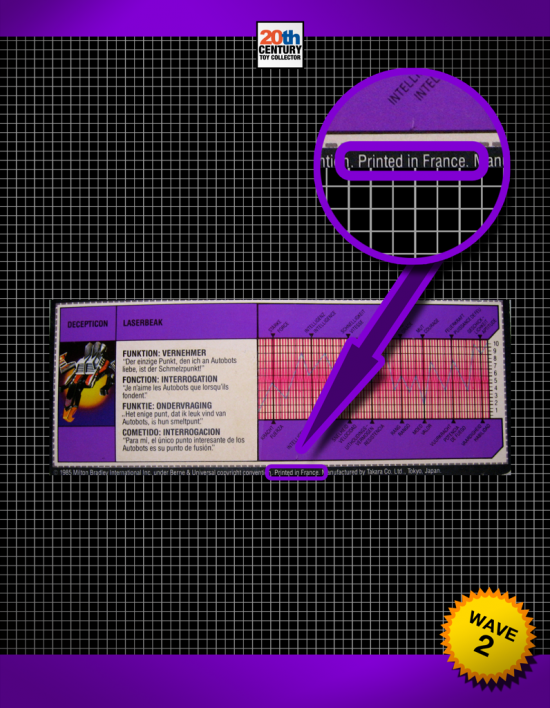
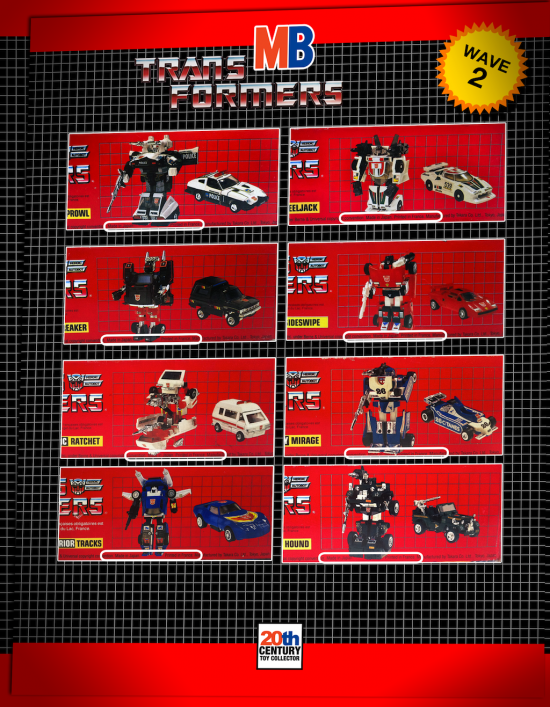
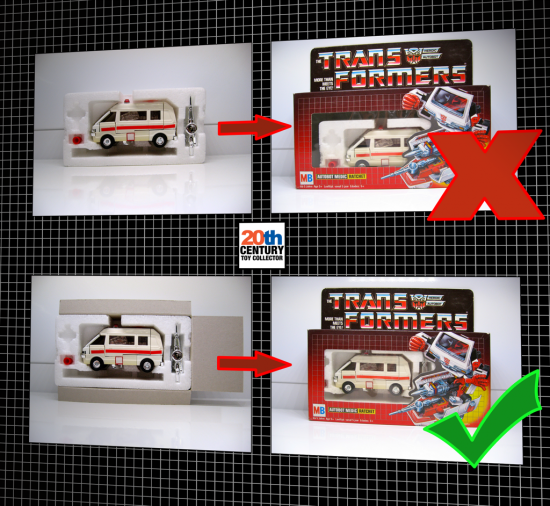
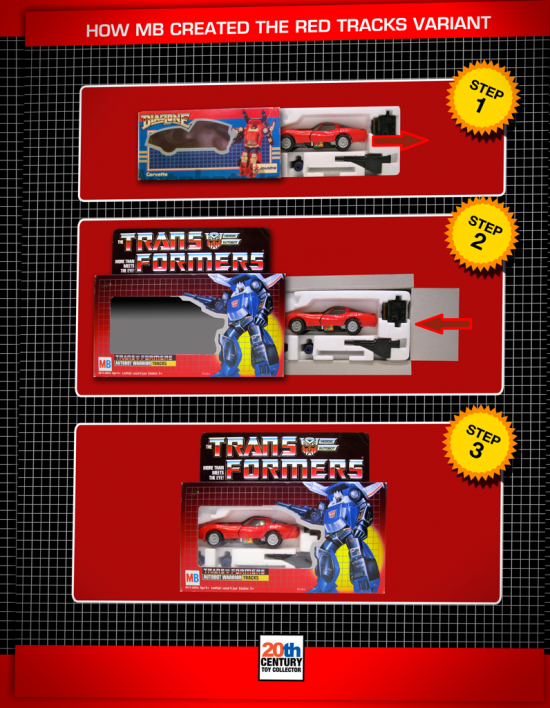
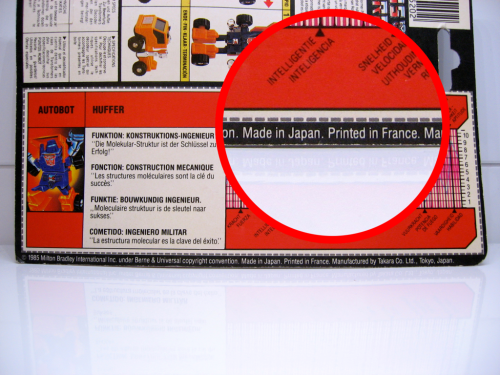
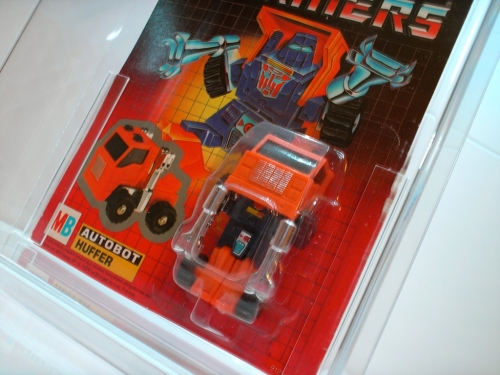
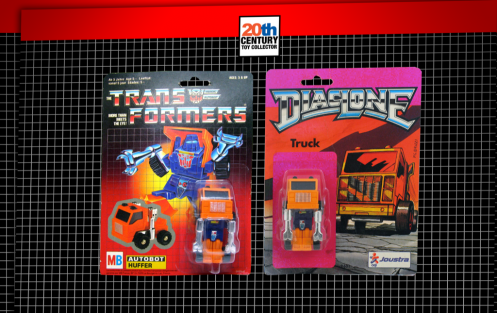
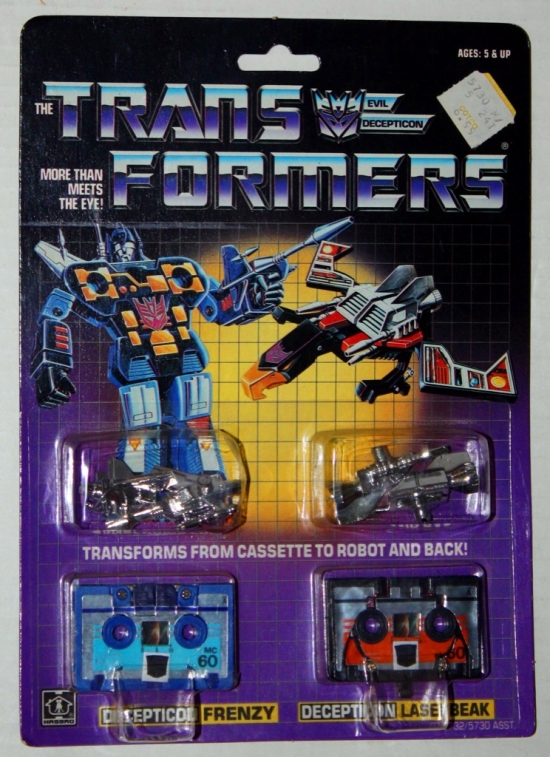
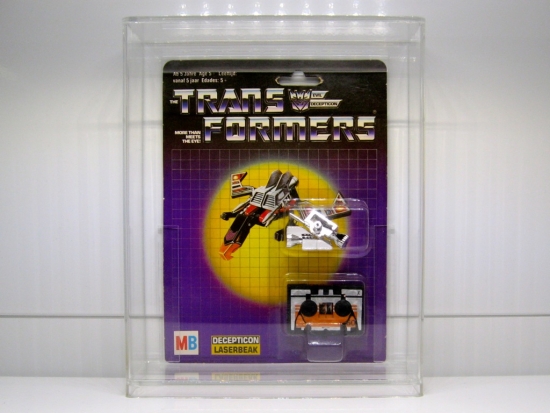
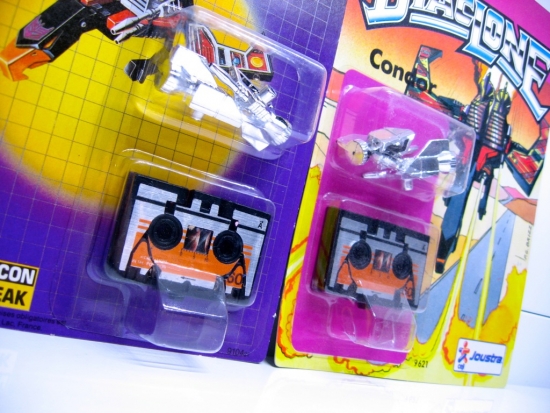
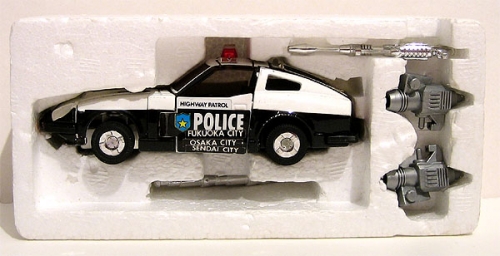
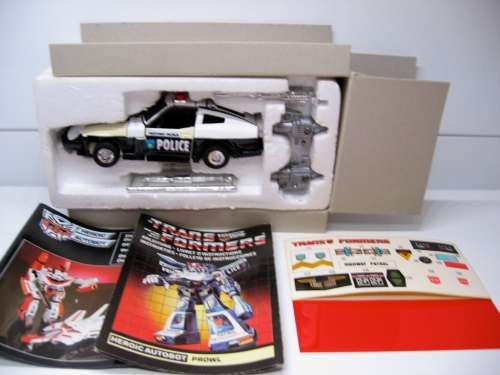
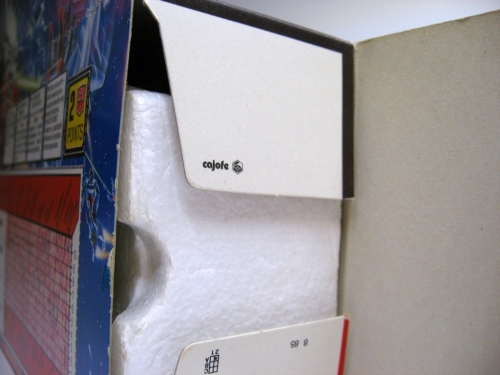
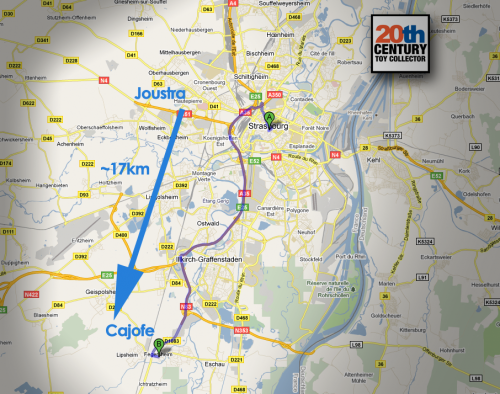
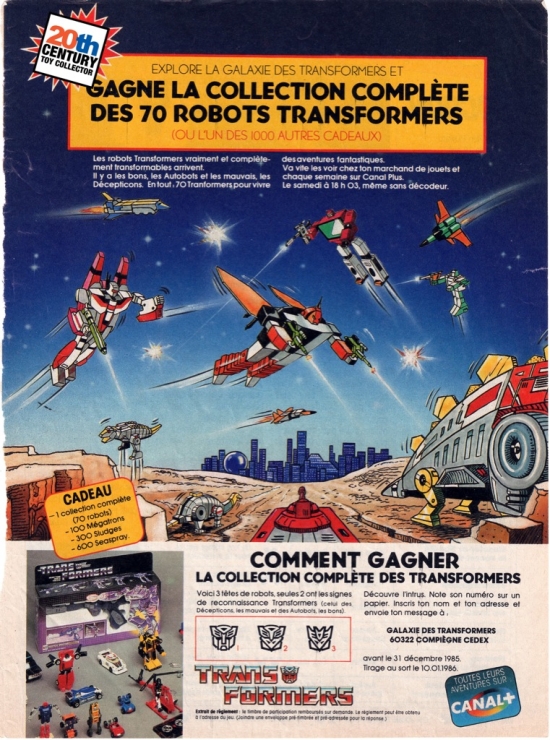
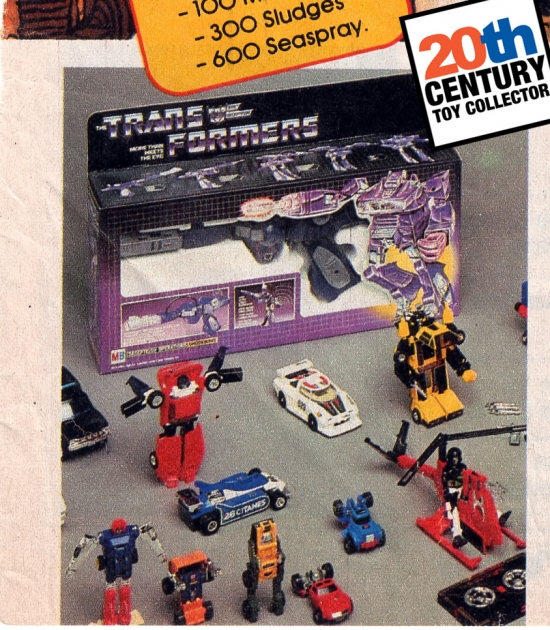
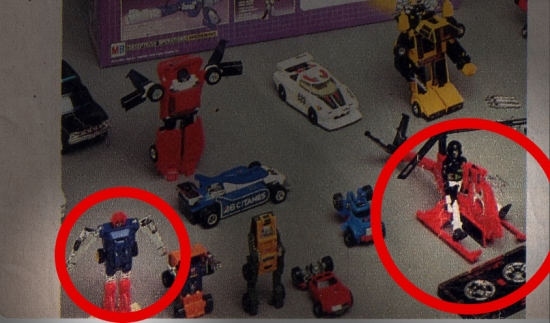
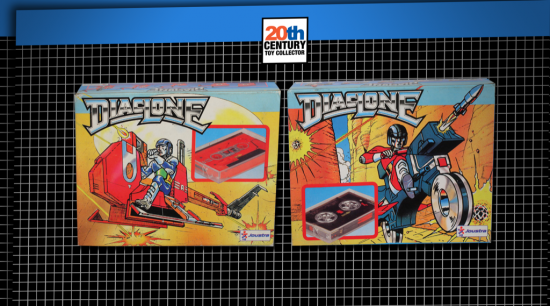
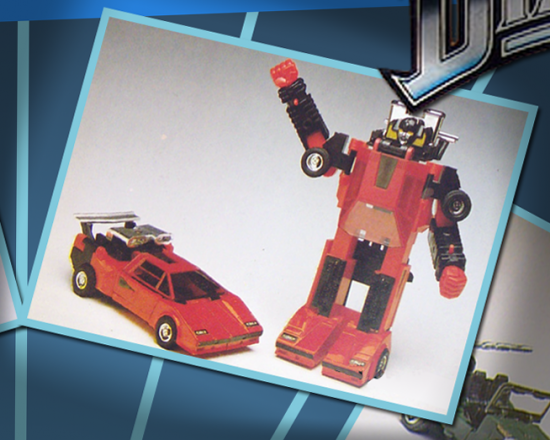
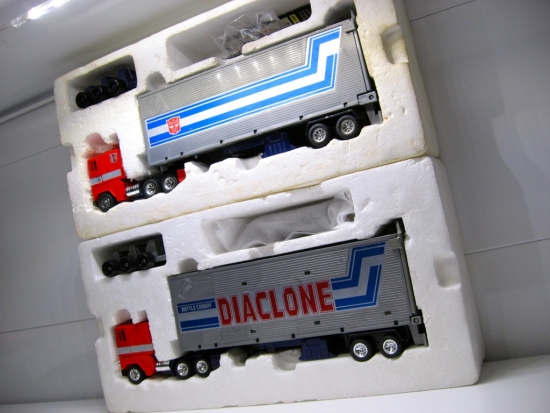
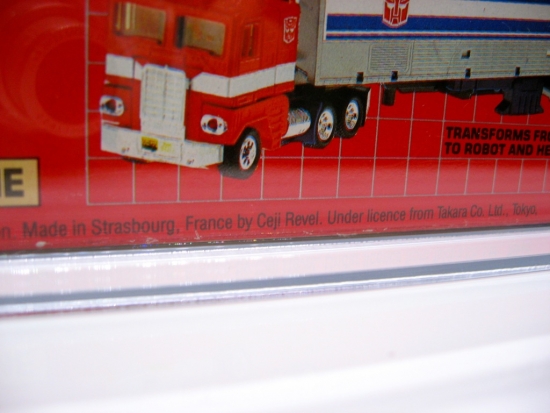
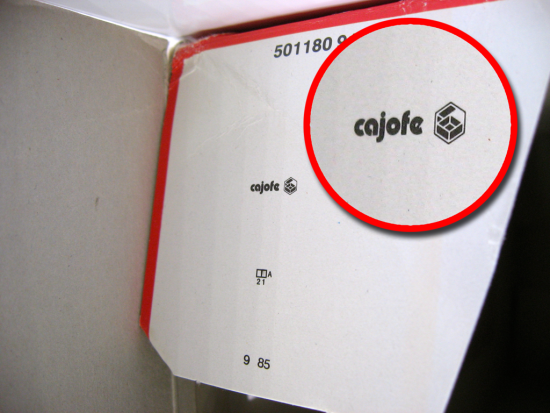
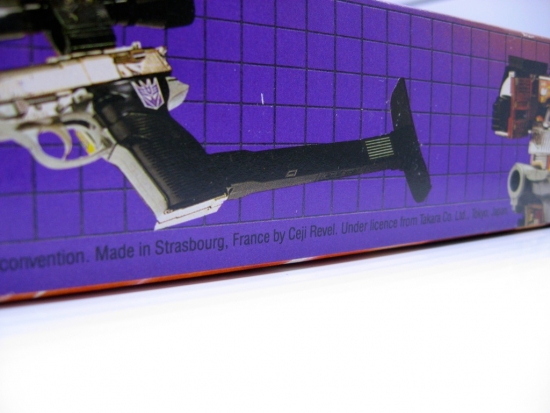
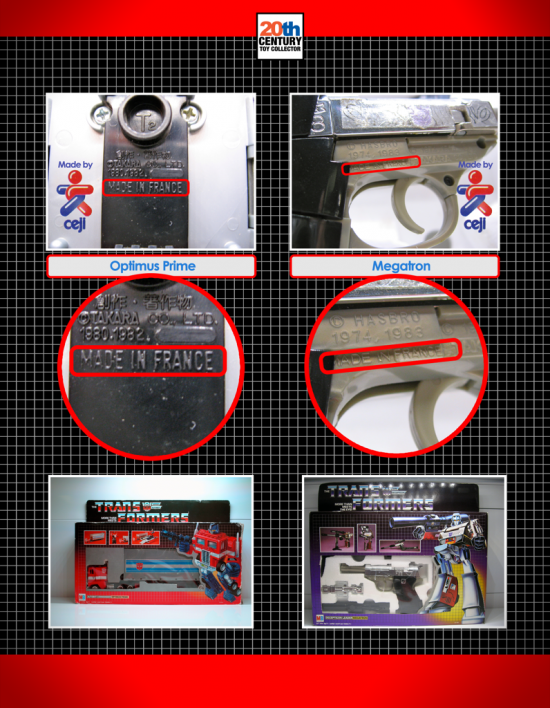
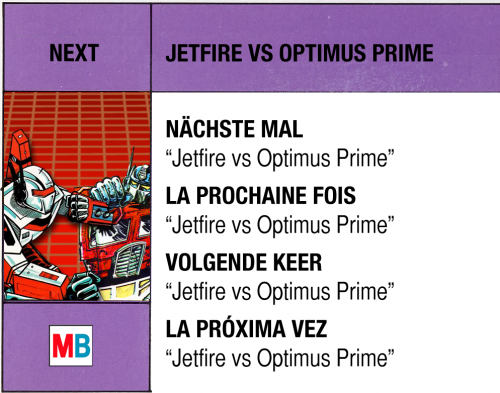
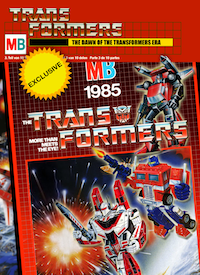
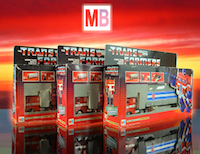
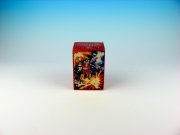
Nerdgasm! Damn that was awesome. It really is interesting to learn about all these things going on behind the scenes 25 years ago! I would never have guessed the European market was so rich with Transformers history! These articles have made me want MB TF’s and Joustra’s just to have a part of history; and I’m from the U.S.!!!
You just made my day, dude! :-) Thx for the very kind comment.
This is such an excellent read, and I think you proved your claim quite well. Great work!
I am speechless…. I just reread the whole thing for a third time. Such an intriguing history. And expertly presented. TF1s Lancia article is a perfect read to go along with this.
LOL. Thx guys. Next on my agenda is squashing everything that is believed to be true regarding the Optimus Prime vs Jetfire leadership and the Dutch Optimus Prime trademark issue. In the process of investigating this I uncovered some interesting info that even further supports the info in this article, but that’ll have to wait until chapter 6 (and some additional confirmation I’m looking for). Thx for the compliments. Makes writing this so worth it :-)
Can I send you pictures of an MB Megatron to help identify? It is produced/printed in Japan, there is no copyright/manufacturing info on the bottom, and there are no “cajofe” markings on the inner flaps…..just a series of numbers. The toy itself is unused.
Thank You
Sure, send me some photos at 20thtc@gmail.com. I suspect you have a genuine wave 1 MB Megatron, btw. :-)
Hi
This morning I went to a car boot sale and picked up a G1 Megatron – was over the moon about this as I had been after one for ages and it was a big hole in my collection. I also picked up a boxed Joustra Cassette Hélicoptère which I thought was a bit of an odd looking thing but knew the relationship Diaclone had to Transformers. Anyway your great site was the best source of information about this so thanks. Have I actually stumbled upon something mega-rare here?
Hi Simon, I also have bought recently a Joustra Diaclone Cassette Helicoptere. You can see pics here:
http://tfsource.com/blog/wp-content/uploads/2012/07/xpri16.jpg
and
http://www.tfw2005.com/boards/members/maz-40291-albums-diaclone-picture9175-junelot2.html
They tend to appear in the UK quite regularly as that is where a friend of mine found his at a show, it is where the last two Cassette Moto have come from (you can see mine in the above pics next to the Helicoptere) and now where you have found yours too. I believe they may have been dumped in countries like the UK when they were no longer on mass retail in Europe because Ceji Joustra Diaclone had been cancelled and the stock transferred to Milton Bradley for Transformers.
The cassette helicopter was also originally available as Japanese Micro Change toy which is regularly seen on auction. The Joustra version is tougher of course, but at least it has the gorgeous artwork and it’s more ‘local’ for you and me :)
All the best
Maz
hi there, i have an early diaclone,joustra,takara megatron browning m1910 pistol, boxed, it still fires bullets, but iv only 1 bullet,the fists are missing also instructions and theres a 2 inch by 1 inch piece torn off the box, iv had it since i was a young boy, could you tell me roughly what its worth and is it sought after, as i might one day decide to sell it.
Man, I have to tell you…I’ve been reading this masterpiece you have created for the past two nights and all I can say is…WOW!
As a former Air Force brat travelling the globe, I’ve seen some variants and oddities, but this takes the cake, man. If you need US support, you’ve got it! Your writing is engaging and intriguing…our thought patterns are very similar, so it was very easy for me to follow!! Keep up the great work my friend!
Great articles! My old website used to have an article about my Joustra find way back in 1985 (Windcharger at an Intertoys for 4 guilders), but it’s not online anymore. I always wondered what that thing was, but thanks to you it all becomes clear. I still have the package after all these years, inclding the pricetag. The biggest mystery to me back then was why Joustra (which I thought were knock-offs) had Transformers I knew from the cartoon like Huffer and Windchargers and Laserbeak…while the actual Transformers available at the moment were those recolours like Swerve and Pipes. Things were a mess back then!
[…] What’s so cool about these MB Autobot cars is that they were originally Diaclone robots. Diaclone is the name of a Japanese toy line that most of the early G1 Transformers were based on, before Hasbro snapped them up. In Europe a French company called Ceji released these Diaclones in 1984 under their Joustra subsidiary. By 1985 Ceji was presumably in financial difficulties and Hasbro/MB bought their remaining stock of Diaclones and rebranded them as Transformers and released them in France, West-Germany, the Benelux, Spain (and possibly also Switzerland). More information on this interesting piece of toy history here. […]
Enjoying the articles very much. Thanks for the detective work and sharing it with us!
Amazing !!
I am TF fans from Hong Kong